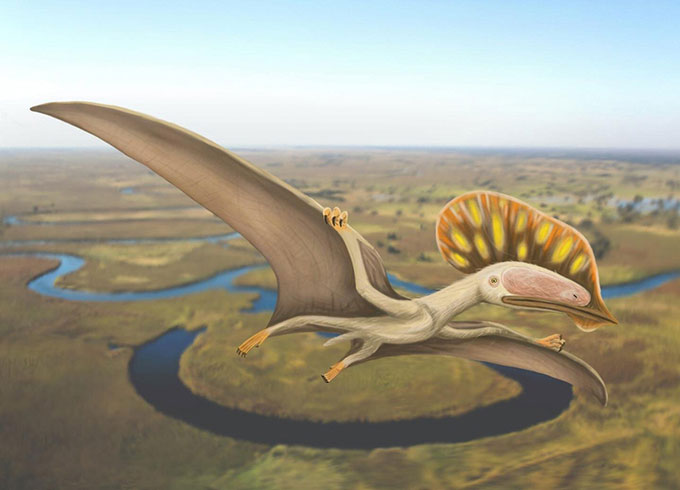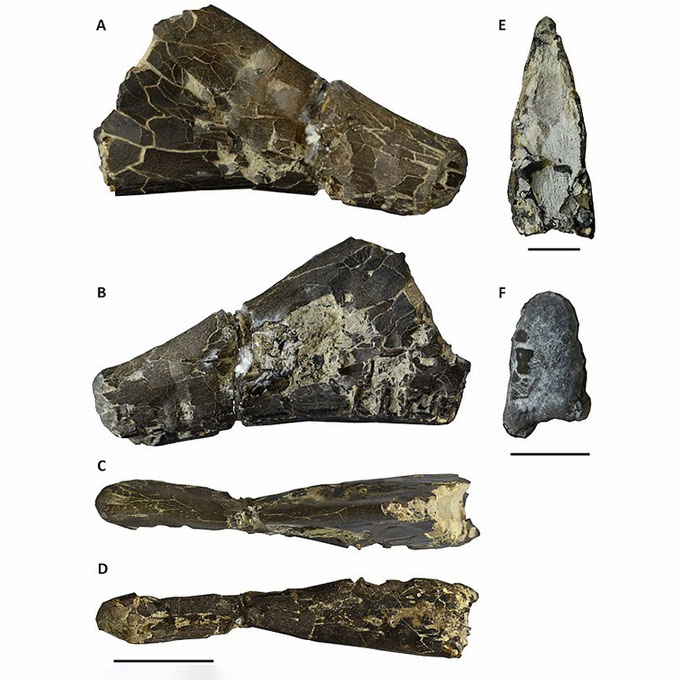The first rare fossils found from the winged lizard
The specimen was accidentally discovered by a local resident on a walk near Sandown Bay, on the island's southeastern coast. Researcher Megan Jacobs from the University of Portsmouth, UK, examined the fossil and determined it belonged to a winged lizard species of the Tapejaridae family.

Reconstructed image of the winged lizard Wightia decivirostris. (Photo: Megan Jacobs).
"The specimen has all of the typical features of the Tapejaridae jawbone, including the pointed beak and many tiny holes containing sensory organs to detect food," Jacobs said in Cretaceous Research .
The team decided to name the specimen Wightia decivirostris . Fossils of this winged dinosaur were previously found only in China and Brazil. The finding in the UK seems to be more closely related to the Tapejaridae species in China.

W. decivirostris fossilized jaw bone from many angles. (Photo: University of Portsmouth).
"Complete specimens in China and Brazil reveal that W. decivirostris has a large head with a giant crest twice the size of the skull. It has vibrant colors and can be used to attract mates." Jacobs describes.
The new fossils not only provide additional information about the winged lizard, but also increase the diversity of ancient reptiles on the island of Wight. Co-author of the study David Martill, a biologist at the University of Portsmouth, emphasizes that the area is one of the most important habitats for dinosaurs and ancient reptiles during the Cretaceous period.
The person who found the W. decivirostris jaw bone on the island of Wight donated the specimen to the Dinosaur Isle Museum in Sandown in the hope that it will be displayed in public soon.
- Pterosaurs missed ancient ink
- Paleontologists discovered the fat on the body of the fish lizard 180 million years ago
- 200 million-year-old sea lizard fossils discovered
- Detecting sea lizard fossils 75 million years
- Detection of prehistoric lizard fossils
- Discover the oldest lizard lord
- The rare lizard has a crocodile shape
- Detection of giant dinosaur fossils in Argentina
- Found tiny lizard legs in amber 20 million years old
- 309 million fossils of mother and son of lizard
- Dog sniffs see ancient fish lizard fossils
- Detecting strange creatures half a snake lizard half
 Discovered an ancient centipede fossil 99 million years old
Discovered an ancient centipede fossil 99 million years old Discovered bat-like dinosaurs in China
Discovered bat-like dinosaurs in China Discovered a 200-year-old bronze cannon of the coast
Discovered a 200-year-old bronze cannon of the coast Discover 305 million-year-old spider fossils
Discover 305 million-year-old spider fossils